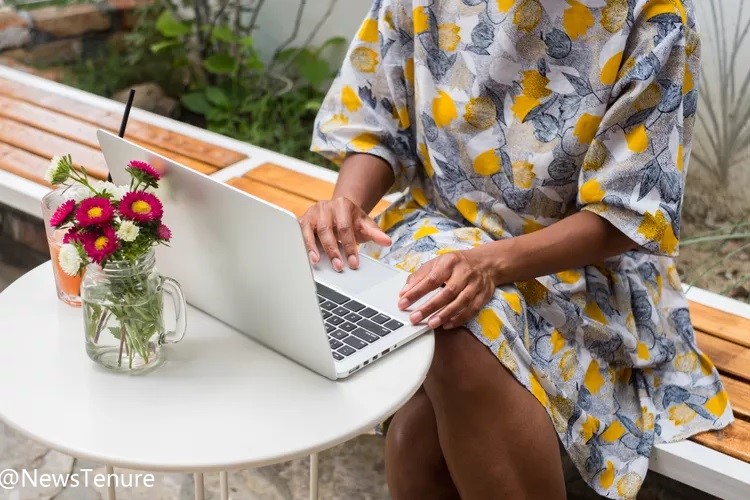For anyone struggling through these bleak winter months, the great news is that warmer days are coming! The birds are chirping, the sun is shining, and we can start taking our Zoom calls from our backyards as WFH (work from home) becomes WFO (work from outside).
If you’re looking for tips on how to make the transition to WFO Trends for spring work for you, we’ve rounded up a few things to consider.
1. Choose Your Shade Wisely
There’s nothing worse than sitting under a garden umbrella that doesn’t quite do its job. That’s why it’s important to consider the actual material of the fabric when purchasing your parasols. “The best fabric on the market is an acrylic marine-grade product called Sunbrella,” said Mark Feldman, Chief Home Officer of Riverbend Home. “It’s a solution-dyed material that is weather and fade-resistant. [It’s specifically] designed for shade and it also prevents mold and mildew from growing.”
Mark also suggests looking for umbrellas with an auto tilt feature. This “allows users to follow the sun for continual shade, even while sitting down. Once the canopy is open, continue to crank the handle and the canopy will tilt infinite degrees for shade and comfort.”
2. Find a Workspace That Mimics Your Desk
We’re all (literally) painfully aware of the downsides of being desk-bound all day. Unfortunately, this doesn’t go away once you move outside–it can actually worsen. Without an ergonomic desk chair to keep your spine in line, you still need to make sure your set-up doesn’t wreck your neck and shoulders.
“The most important factor is to make sure the chair you are sitting on and the table you are using are aligned properly,” said Mark. “Although working from the hammock may sound cozy, if you’re going to be working outside for a long stretch, your best bet is to set up shop at a traditional outdoor dining table.”
3. Sit Correctly
The work doesn’t stop with making sure your table is ok. You still need to sit correctly.
“If your chair is too low, it will cause lower back pain. If the chair is too high you will get elbow pain,” said Mark. So how do you know if you fall on either side of just right? “If the chair and table are properly aligned, you will be able to rest your arms comfortably on the table,” said Mark. “To ensure your chair and table are at proper spacing, you should never have to reach, stretch or twist for anything.”
Mark also suggests keeping these things in mind: “Feet should always be flat on the ground. To make sure the seat is at the right height, the highest point of the seat should be just below the knee cap. Knees should be at a 90-degree angle.”
And if your outdoor chair doesn’t have great back support he suggests that you “consider adding a lumbar pillow to your outdoor dining chair.”
4. Consider Standing
Standing desks have grown in popularity, and they’re another great alternative for WFO. But don’t lug your desk into the wilderness! Instead, Mark suggests “repurposing a potting bench or a bar height table.”
5. Limit Distractions as Much as Possible
Working in a wide-open space, especially if you’re on a computer, can be a logistical nightmare. But if you have the room, you could consider exploring your options for something more permanent. Mark suggested considering “repurposing a shed or investing in a gazebo or pergola.” If this isn’t feasible, then hopes for privacy aren’t lost. “Use outdoor privacy screens, curtains, or planters to create an enclosure to make your workspace more private while also drowning out noise. You can further block-out loud sounds by using noise-canceling headphones, white-noise machines, or even a small outdoor waterfall.”
No matter how you decorate your new office space, don’t forget the sunscreen and bug spray—two of the most important WFO requirements!




